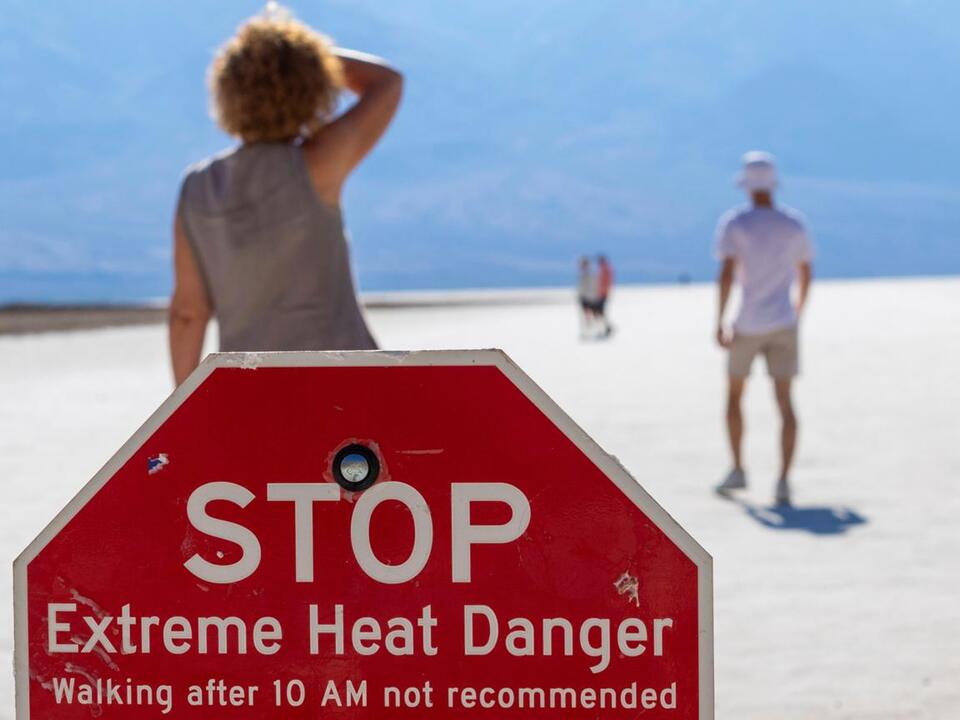Physical Address
304 North Cardinal St.
Dorchester Center, MA 02124
Physical Address
304 North Cardinal St.
Dorchester Center, MA 02124

As Southern California prepares for another round of record heat on Friday, Death Valley National Park—often referred to as the hottest place on Earth—just recorded its hottest summer ever.
Between June and August, the average daily temperature at this park reached a staggering 104.5 degrees Fahrenheit. This marks an increase of 0.3 degrees above the previous high set in 2021, which was 104.2 degrees.
Despite the extreme conditions, the park remains a popular destination for tourists. However, the soaring temperatures have led to serious incidents, including multiple fatalities and rescues in July. One resort employee had to be rescued after succumbing to severe dehydration and losing consciousness while sliding down a hill.
There were also reports of bystanders assisting a woman hiking in the Badlands Loop when temperatures soared to 115 degrees. In a tragic incident earlier in July, a motorcycle rider died from heat exposure near Badwater Basin, with another requiring medical attention for severe heat illness. On that particularly hot day, temperatures reached as high as 128 degrees. The park confirmed that heat was a contributing factor in at least two fatalities.
July witnessed an especially grueling heatwave, with nine consecutive days of temperatures hitting 125 degrees or above. The peak temperature for the summer was an alarming 129.2 degrees on July 7.
This week, the park is urging visitors to brace for high temperatures ranging from 100 to 130 degrees. Park officials recommend minimizing outdoor time, avoiding hikes after 10 a.m., staying well-hydrated, and noting that cell phone service is extremely limited throughout most of the park. Forecasts indicate that triple-digit temperatures will persist into early October.
Though Death Valley lies inland, the extreme heat is not confined to the park. Coastal areas of California are also experiencing abnormally high temperatures.
Los Angeles, with a population nearing 4 million, has been seeing a string of days featuring highs in the 90s and into the 100s. According to the National Weather Service, temperatures reached 102 degrees on Thursday, initiating a potentially record-breaking four to five days of triple-digit heat. The previous record for consecutive days in excess of 100 degrees was set in 1955. Five consecutive days would equal the third-longest duration on record.
In nearby areas, Hollywood Burbank Airport recorded a high of 114 degrees Thursday, matching an all-time high for that date.
The oppressive heat has pushed many Southern California residents indoors, with reports indicating that some students in Long Beach attended schools lacking air conditioning. The Long Beach Unified School District revealed that 84 percent of its schools are equipped with air conditioning, and stated that all but one will have it within the next three years. It is important to note that California does not mandate air conditioning in schools.
To address the situation, Los Angeles has opened several cooling centers throughout the downtown area. Mayor Karen Bass tweeted on Thursday that an excessive heat warning would remain in effect through Monday, and these cooling centers would continue to assist residents. Additionally, more libraries will extend their hours on Sunday to offer a cool refuge for those seeking relief.
Heat is not the only concern for Angelenos. The South Coast Air Quality Management District reported air quality levels were moderately to very unhealthy for sensitive groups. As temperatures increase, so do air quality concerns.
Los Angeles is recognized as the city with the highest ozone pollution levels in the country, as per the American Lung Association. Elevated temperatures, exacerbated by climate change, can trigger ground-level ozone levels by accelerating the chemical reactions that produce it. Nitrogen oxides and volatile organic compounds react under sunlight and heat to create ozone.
Smoke from wildfires also poses potential health risks, with significant fires burning to the north of the county. Smoke from wildfires across various states, including Oregon, Idaho, Nevada, Utah, Michigan, and North Dakota, is contributing to poor air quality.
Wildfire smoke can aggravate respiratory diseases and is linked to premature death. A study released by the National Bureau of Economic Research earlier this year indicated that wildfire smoke exposure is responsible for nearly 16,000 deaths each year.
While heat-related fatalities and illnesses are more preventable, the World Meteorological Organization underscores that extreme heat leads to the highest death toll of all severe weather events. A recent research study highlighted that heat-related deaths have been on the rise, doubling in the past few decades. Whether this trend will continue remains uncertain, especially in light of reports from the European climate service Copernicus indicating that this summer has been the hottest on record for the planet.
Source: Associated Press



